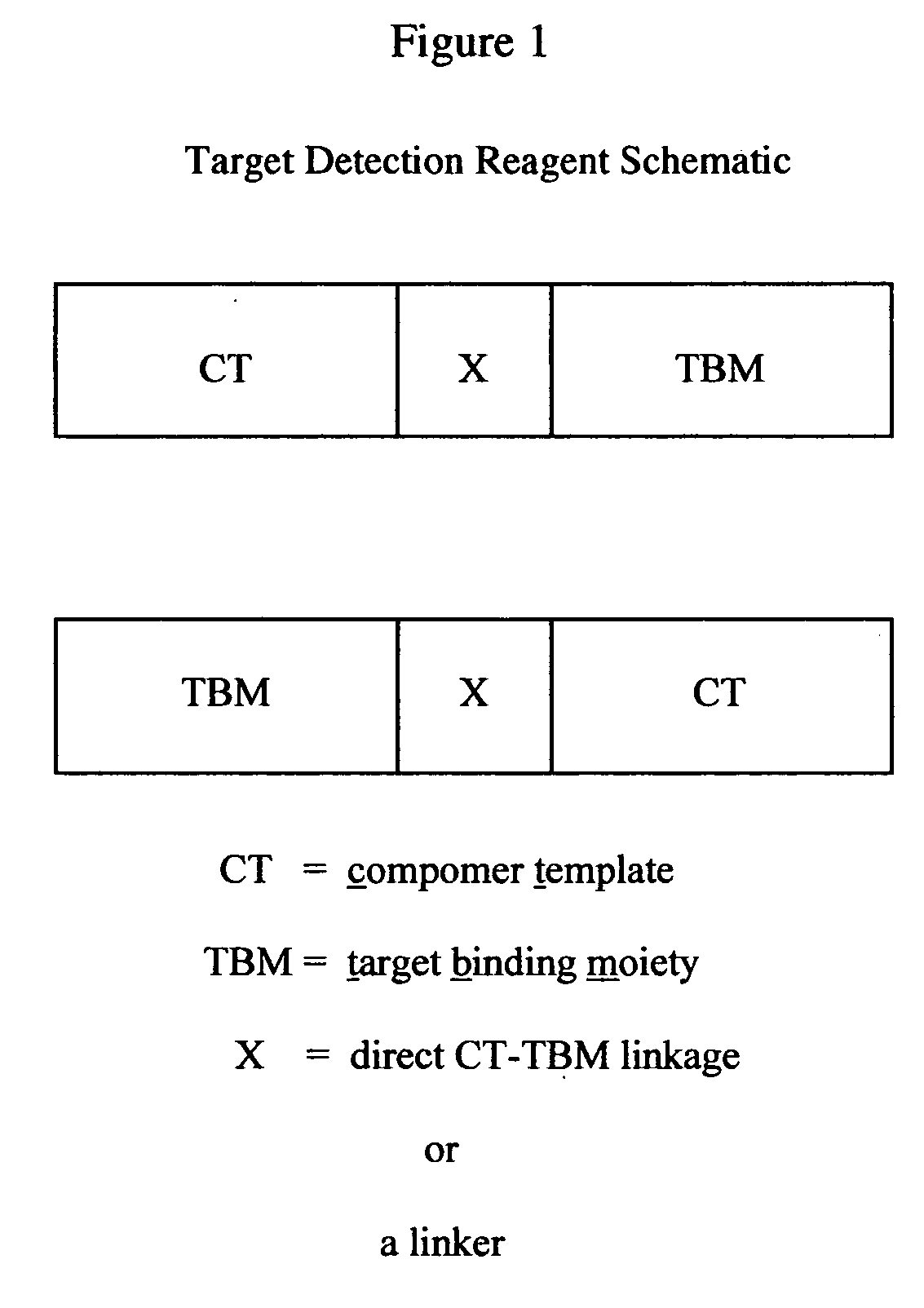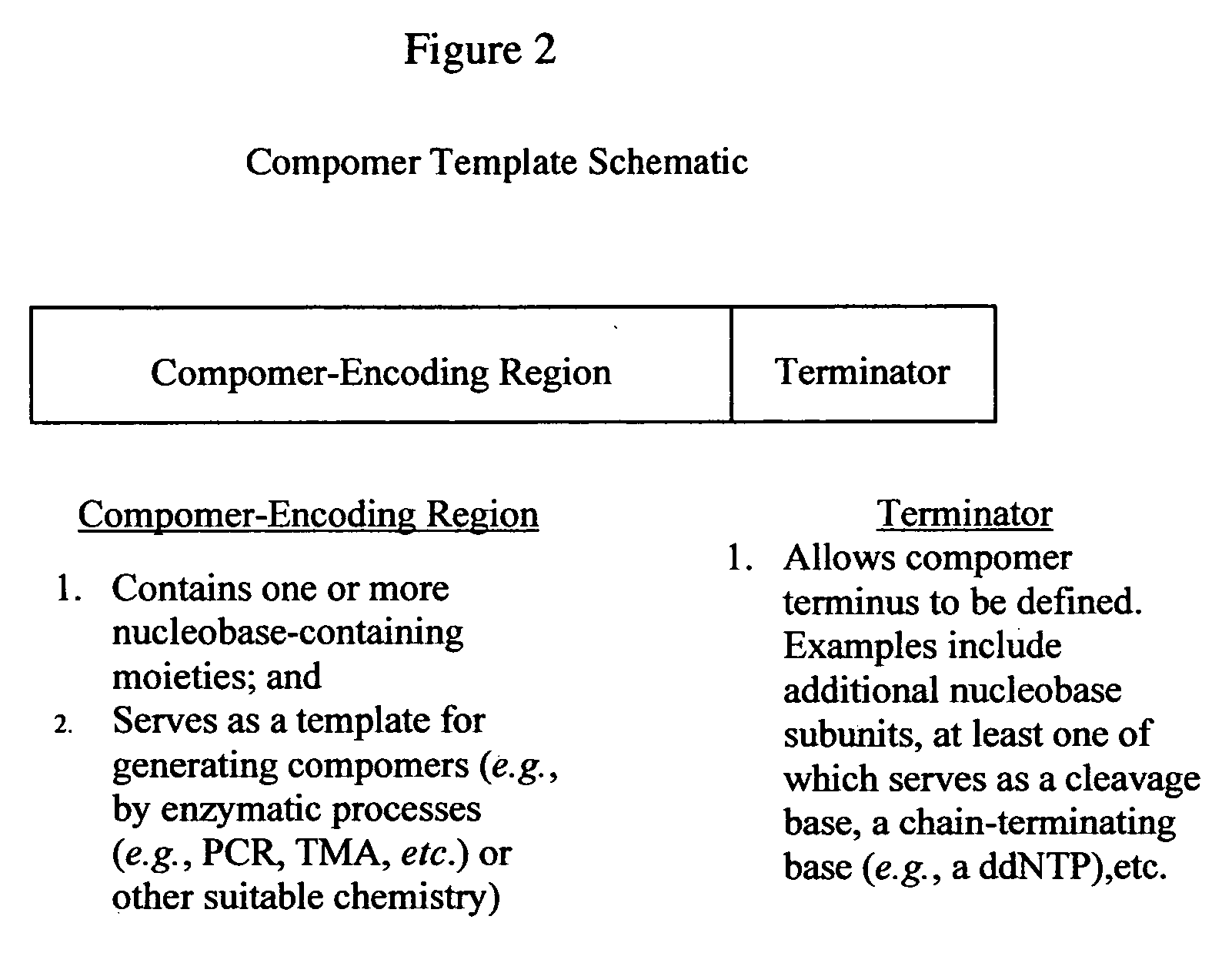Target-specific compomers and methods of use
a biomolecule and target technology, applied in the field of chemical analysis, can solve the problems of limiting the advantage that may be obtained by an intermediate purification, isolation, or separation step, and achieve the effects of reducing the risk of false negative or positive results, cost-effectively, and increasing accuracy, efficiency and reliability
- Summary
- Abstract
- Description
- Claims
- Application Information
AI Technical Summary
Benefits of technology
Problems solved by technology
Method used
Image
Examples
Embodiment Construction
, and from the claims.
BRIEF DESCRIPTION OF THE FIGURES
[0092] The following drawings form part of the present specification and are included to further demonstrate certain aspects and embodiments of the present invention. The invention may be better understood by reference to one or more of these drawings in combination with the detailed description of specific embodiments presented herein.
[0093]FIG. 1 diagrammatically illustrates the general structure of a target detection reagent according to the invention. As shown, a target detection reagent comprises a compomer template (CT) linked to a target binding moiety (TBM). The CT-TBM linkage (X) may be directly between reactive groups on the respective compomer template and target binding moiety portions or by way of a linker molecule (or group of molecules) disposed between the compomer template and target binding moiety. Preferably, linkages between the various components are covalent.
[0094]FIG. 2 diagrammatically illustrates the g...
PUM
| Property | Measurement | Unit |
|---|---|---|
| Composition | aaaaa | aaaaa |
| Length | aaaaa | aaaaa |
| Covalent bond | aaaaa | aaaaa |
Abstract
Description
Claims
Application Information
 Login to View More
Login to View More - R&D
- Intellectual Property
- Life Sciences
- Materials
- Tech Scout
- Unparalleled Data Quality
- Higher Quality Content
- 60% Fewer Hallucinations
Browse by: Latest US Patents, China's latest patents, Technical Efficacy Thesaurus, Application Domain, Technology Topic, Popular Technical Reports.
© 2025 PatSnap. All rights reserved.Legal|Privacy policy|Modern Slavery Act Transparency Statement|Sitemap|About US| Contact US: help@patsnap.com



